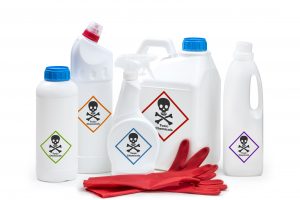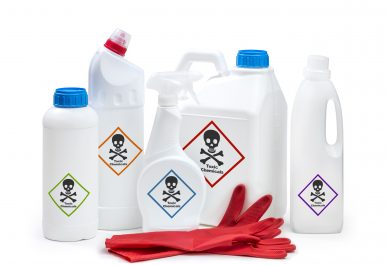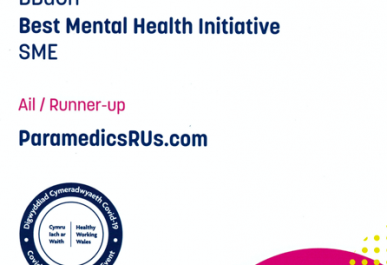Is Chemical First Aid training Essential?
Chemicals are commonly used by businesses of all sizes. Incorrect handling, or accidents can cause serious chemical injury, which can lead to permanent disability or death.
The most common sites of chemical injury are the upper extremities and hands, with acid burns being four times more likely than alkali. Inhalation injuries and eye injuries are also prominent.

Some household chemicals used may have a relative low toxicity, however, when mixed with other chemicals, these relatively safe substances can change state, and become potentially fatal.
Chemical First Aid
Knowing what to do after a chemical accident can make positive impact on the person who is injured. This course teaches how to deal with solid, liquid and gaseous chemical accidents.

Some workers, such as cleaners, or those working in laboratories, are also susceptible to needle-stick injury. So, in an increasingly litigious world, it is advisable that companies and organisations protect their staff, by giving them suitable training on what to do in case of an accident.
 PPE Chemical Safety
PPE Chemical Safety
Safe systems of work and correctly sourced and worn personal protective equipment (PPE) can help to mitigate some risks. But the limitations of PPE, the effective lifespan (the PPE’s break through time) and its importance is often unknown to wearers.
Chemical Safety Regulations
The Health and Safety Executive (HSE) state that where the work involves higher level hazards such as chemicals, or special hazards such as hydrofluoric acid. Employers will then need to provide additional training for first aiders to deal with resulting injuries. (HSE, 2018). Training providers must show that they are competent to deliver the first-aid training.
Chemical First Aid Made Easy
Staff at PRU Medical have experience in working in ambulance service Hazardous Area Response Teams. So are trained and experienced in dealing with casualties who are affected by Chemical, Biological, Radiological, Nuclear and Explosive (CBRNE) environments. These same staff also have experience teaching people to become Paramedics in Higher Education.
The content of our bespoke chemical first aid programme can be tailored to address the most commonly used chemicals in your organisation. Also, to address the PPE that is available in your organisation. For example, if you use hydrofluoric acid – we will cover this. If you use liquid nitrogen, we will cover this. If your staff wear respirators – we can cover them.
Tailor made courses are the best way to protect your staff
For more information please see our Chemical First Aid course or contact us










